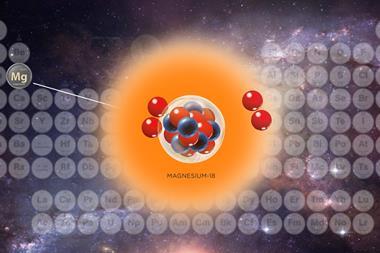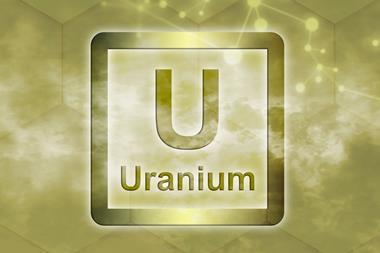An exotic nitrogen isotope featuring seven protons and just two neutrons may have been created by a research team from China and the US. The nitrogen-9 nucleus would be the first known example that decays by releasing five protons.
Researchers are interested in nuclei with large imbalances in the number of protons and neutrons that they contain. These proton- or neutron-rich nuclei tend to have exotic physical properties and offer scientists a way to study extreme examples of nuclear structure.
In an experiment at the National Superconducting Cyclotron Laboratory at Michigan State University, the US–China team fired an intense beam of oxygen-16 atoms at a beryllium target. From the products of this event, the team isolated a secondary beam of oxygen-13 atoms that were fired at a second beryllium target. Among the products formed during this event, the team detected a signal that seems likely to correspond to nitrogen-9 nuclei.
If confirmed, nitrogen-9 would be the first nuclide that decays by releasing five protons and an alpha particle. Boron-7, fluorine-13, sodium-17 and potassium-31 are currently the only known three-proton emitters, while carbon-8 and magnesium-18 are the only two nuclei that decay by the emission of four protons.
The team are now planning follow up experiments to provide further evidence for the finding.
References
RJ Charity et al, Phys. Rev. Lett., 2023, DOI: 10.1103/PhysRevLett.131.172501

















No comments yet